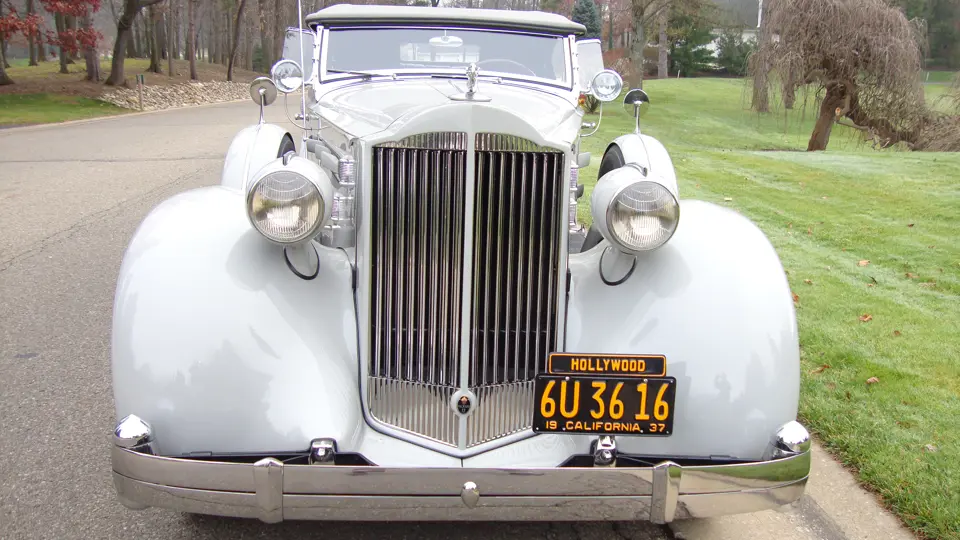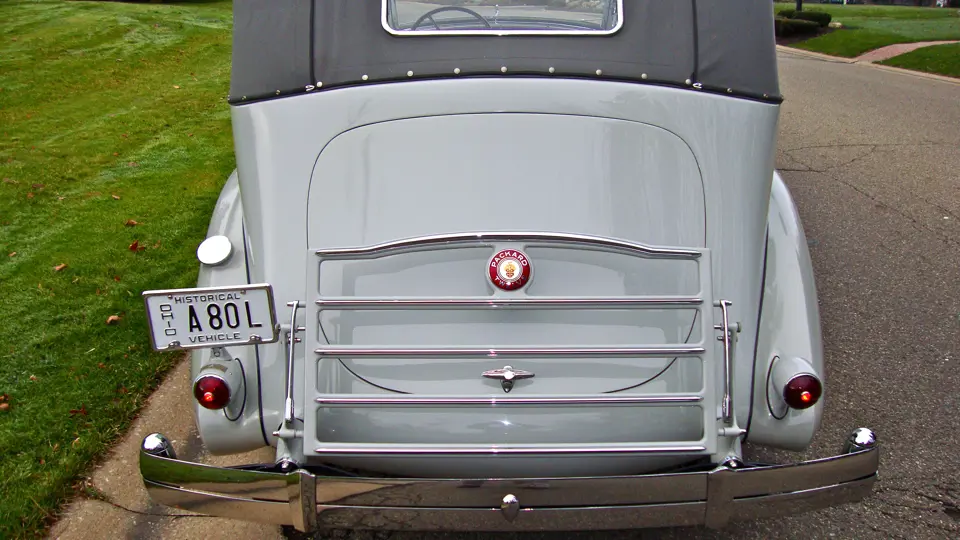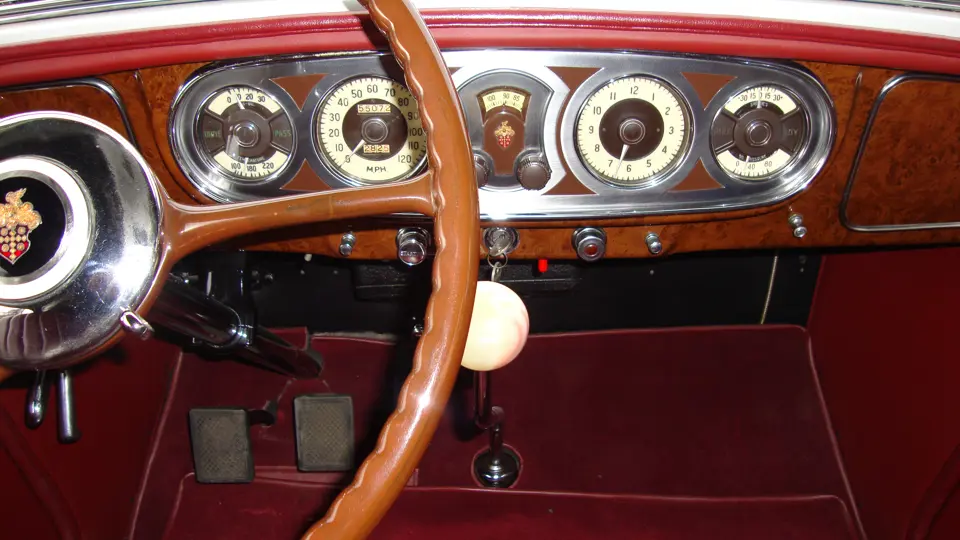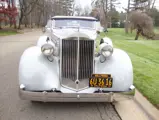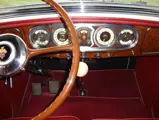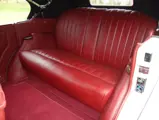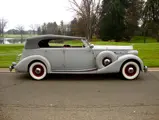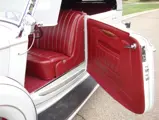Model 1207. 175 bhp, 473.3 cu. in. L-head V-12 engine, three-speed manual transmission, front and rear semi-elliptic leaf spring suspension, four-wheel power-assisted mechanical drum brakes. Wheelbase: 139.25"
• Powerful and prestigious Packard V-12
• Elegant Dietrich body
• Attractive restoration
Packard discontinued its first V-12, the massive Twin Six, after 1923, replacing it with the smaller Single Eight, which outperformed it. After Cadillac brought out a V-16 in 1930, however, and then a V-12, Packard was drawn back into the cylinder race. The response was a new Twin Six, one with no resemblance to the old. At 445.5 cubic inches, it was larger than its predecessor, and with a 67-degree vee, it was wider. Most importantly, it vastly outperformed it, 160 bhp to the old engine’s 90. When introduced in January 1932, an amazing 22 body styles were offered, priced from $3,745 to $7,950, but fewer than 550 V-12 cars were sold during the model year.
For 1933 the line was re-christened simply “Packard Twelve,” and while the marketing was just as ambitious, the results were nearly the same as the previous year, with 540 cars built. Finally, in 1934 the market improved, and sales nearly doubled. All Packards received new, more streamlined bodies in 1935. The Twelve gained aluminum heads and a quarter-inch of stroke.
Raymond Dietrich was hired in 1913 as an apprentice draftsman at Brewster & Co. in New York. He was just 19. Brewster sent him to the Andrew F. Johnson Technical School, then the most rigorous education available in the field of coachbuilding. Upon graduation, he defected to Chevrolet as assistant body engineer. Then, as Chevrolet was sold to General Motors, Dietrich went back to Brewster, met Tom Hibbard, and shortly the two of them went out on their own to form LeBaron, Inc. In 1925, however, Edsel Ford lured Dietrich to Detroit, where he accepted an invitation to form Dietrich, Inc., in partnership with the Murray Corporation of America, a body supplier to much of the Detroit auto industry.
Dietrich did a number of custom designs for Packard dealers, which brought him to the attention of Alvan Macauley, Packard’s president. Macauley went to visit the up-and-coming designer and ended up ordering 175 bodies, beginning a long association that saw a number of Dietrich designs in Packard catalogues. Continuing to work for other clients, Dietrich, Inc. became the largest American constructor of non-production bodies and won gold medals at Paris and Monte Carlo. Raymond Dietrich left to work at Chrysler as the bespoke body business began to wane in 1932. Murray, however, continued to produce a number of Dietrich designs for Packard and still had the rights to the “Dietrich label.” In 1934, much of Murray production capacity was needed for the new One-Twenty Packard, so senior open bodies were delegated to Dietrich, Inc., still operating at Holden Avenue in Detroit, north of the Packard works on Grand Avenue. In July 1935, however, Dietrich, Inc. was wound down, although the label continued to be used for two years longer. This is one of the last “Dietrich” Packards to be completed.
Delivered new on April 22, 1936 by the West Chester, Pennsylvania Packard dealer, this car was owned in the 1960s by J.S. MacKiernan of Dorchester, Massachusetts. By 1963 he had sold it to John Hagerty of Cohasset, Massachusetts. Hagerty passed it to Ray Molder of Canton, Ohio, from whom the current owner acquired it in 1986.
It was restored in the 1990s, the paint and bodywork performed by Jeff Smith of Doylestown, Ohio, upholstery by Lehman Upholstery of nearby Wadsworth. Mechanical restoration was by T.J. Link of North Canton, Ohio, with the engine rebuilt by Classic Car Center of Warsaw, Indiana. Although now an older restoration, the car remains in excellent condition. Never shown since its completion, it is entirely worthy of a debutant season at some of the prestigious events.

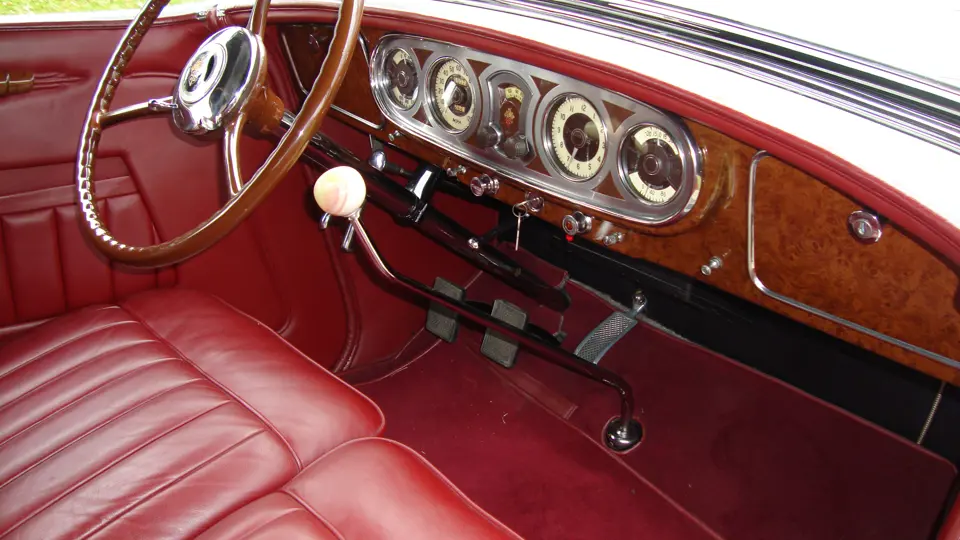
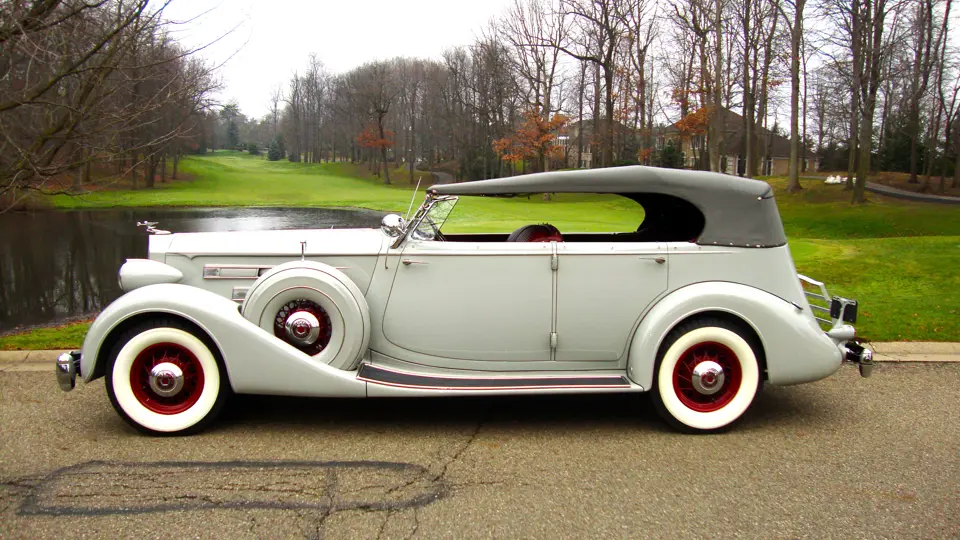



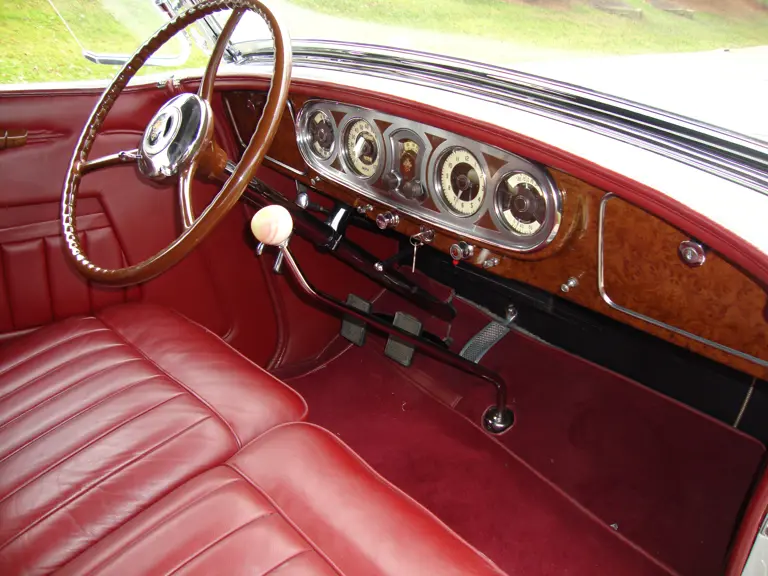
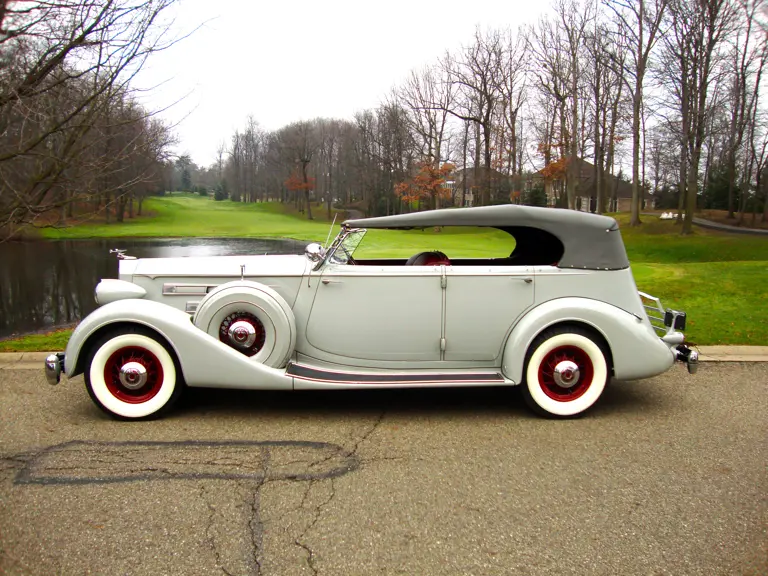
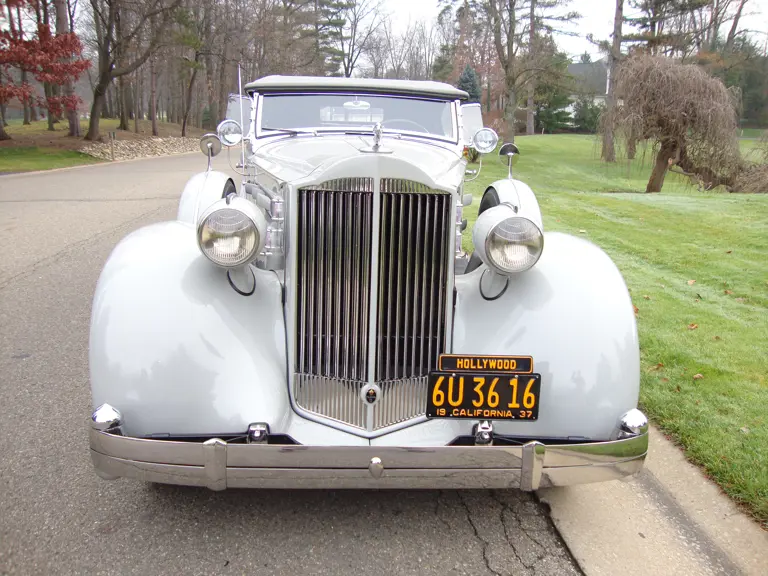
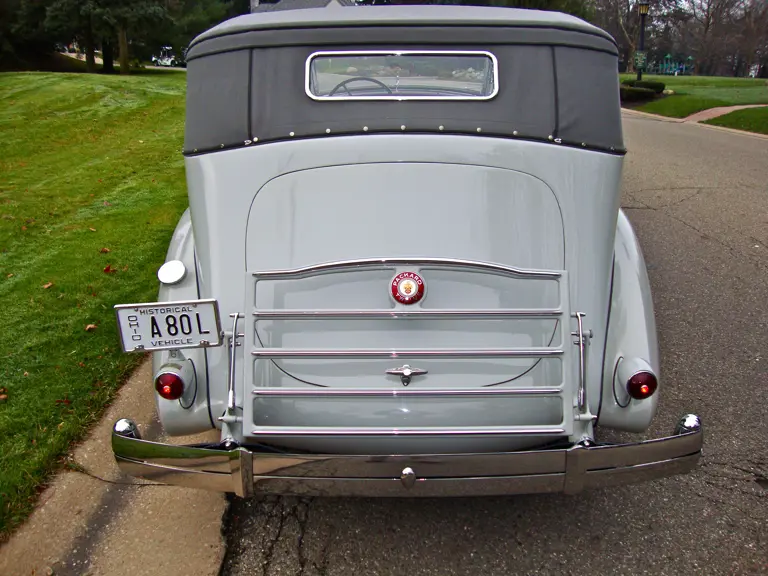


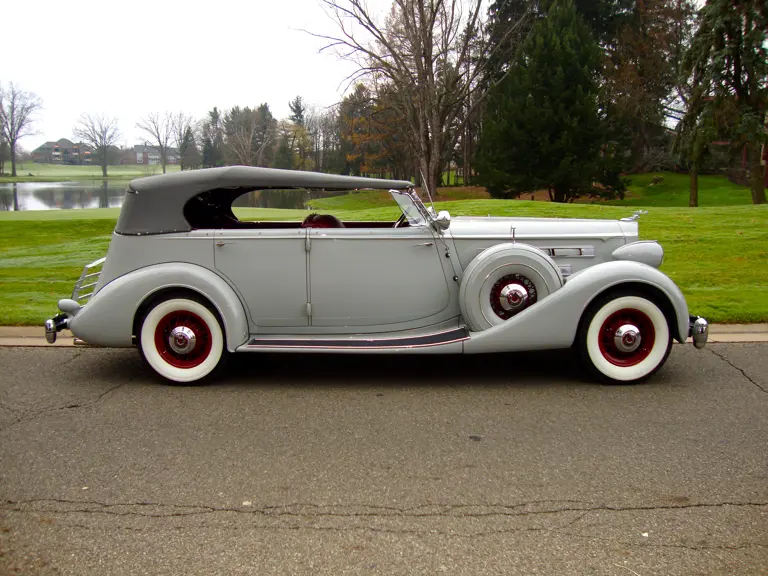
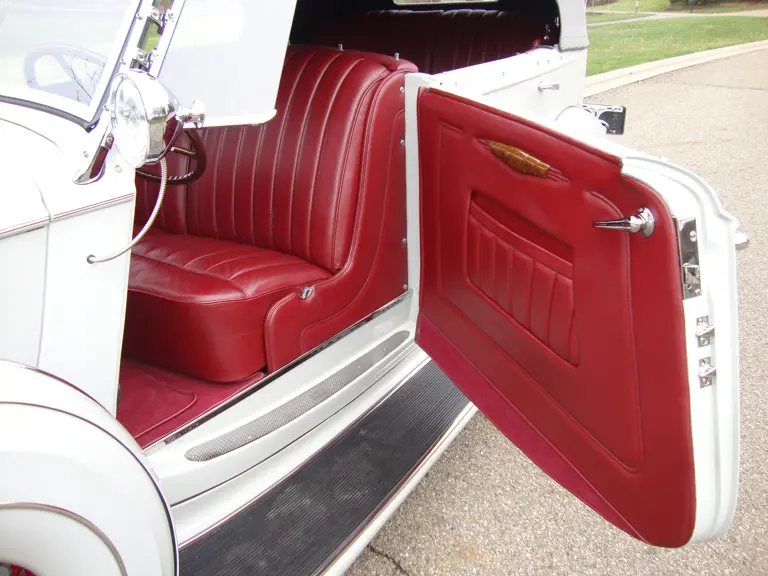

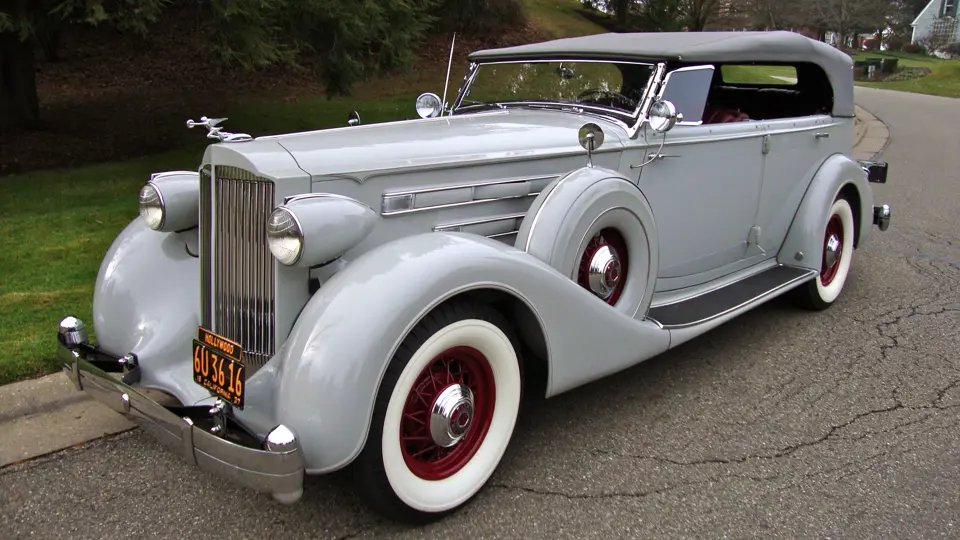
 | Phoenix, Arizona
| Phoenix, Arizona
